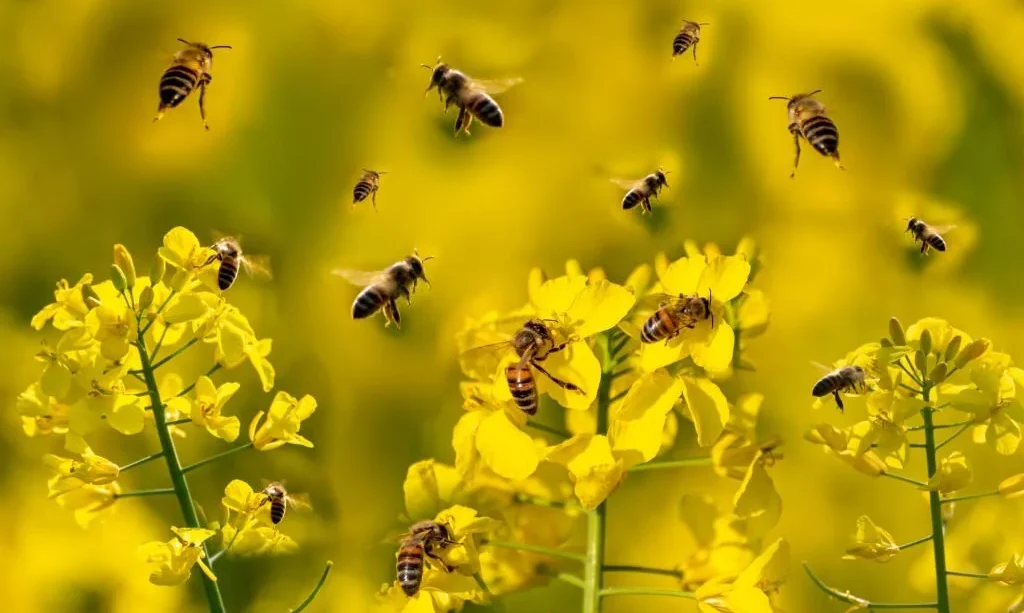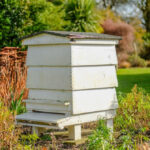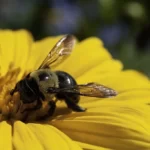Have you ever found yourself cautiously dodging bees and wasps during your outdoor activities? While these buzzing insects can sometimes be intimidating, it’s important to remember that bees and wasps play crucial roles in pollination and maintaining the balance of ecosystems. In this simple guide, we’ll explore how to safely repel bees and wasps while respecting their importance. Let’s dive in and learn more about these fascinating creatures!
- Keep common types of bees away from your yard, garage, and home
- Use inside and outside your home with our naturally derived, non-toxic formula that is safe for your yard and family (when used as directed).
- Apply easily and quickly with just a few simple sprays to begin protection.
- Trust our pest control formula developed by pro exterminators using essential oils— which are safer than toxic pesticides, but still hated by bees.
- Rest assured with our satisfaction guarantee—we stand by our years-tested formula. You will see results.
Bees and Wasps
Bees and wasps are common insects that are often mistaken for one another. Understanding their characteristics and behaviors can help us coexist with them more peacefully:
- Bees: Bees are important pollinators that play a vital role in the reproduction of plants. They are generally not aggressive and will only sting if they feel threatened. Bees are attracted to flowers and nectar-producing plants and are less likely to bother humans unless provoked.
- Wasps: Wasps are beneficial insects that help control pest populations. Unlike bees, they can be more aggressive, especially when their nests are disturbed. Wasps are attracted to sugary foods and meats and may become more active around human activities involving food.
By understanding the differences between bees and wasps, we can appreciate their contributions to our environment and take appropriate measures to minimize their interference during our outdoor experiences.
In the next sections, we’ll explore ways to avoid attracting bees and wasps, as well as natural repellents and physical barriers to peacefully deter them from our outdoor spaces. Let’s create a harmonious environment for both humans and these important insects!
Avoiding Attractants
To peacefully coexist with bees and wasps, it’s important to minimize attractants that can lure them to our outdoor spaces. Here are some tips to consider:
- Cover Food and Drinks: When dining outdoors, cover food and drinks to reduce the enticing aroma that attracts bees and wasps. Use lids, food covers, or even simple cloth napkins to keep them protected.
- Properly Dispose of Garbage: Ensure that garbage cans have tightly sealed lids to prevent odors from attracting bees and wasps. Regularly empty and clean the bins to minimize their attractiveness.
- Manage Sweet Scents: Fragrances from perfumes, lotions, and scented products can attract bees and wasps. Opt for unscented or lightly scented options when spending time outdoors.
By minimizing attractants, we can reduce the likelihood of attracting bees and wasps to our outdoor activities.
Natural Repellents
If you want to deter bees and wasps naturally, there are certain scents and ingredients that they tend to avoid. Consider the following:
- Citrus Scents: Bees and wasps are not fond of citrus scents. Try placing citrus peels or using citrus-scented essential oils in outdoor areas to help repel them.
- Minty Freshness: Mint is known to discourage bees and wasps. Consider planting mint near outdoor seating areas or using mint essential oils or sprays to create a deterrent.
- Eucalyptus and Cloves: Bees and wasps also tend to steer clear of eucalyptus and cloves. You can use eucalyptus oil or cloves in a similar way as the other natural repellents.
Remember, while these natural repellents can help deter bees and wasps, they are not foolproof solutions and may not work in all situations. It’s essential to practice caution and respect when dealing with these insects.
In the next section, we’ll explore the use of physical barriers as an additional measure to peacefully repel bees and wasps. Let’s create a buzz-free environment for our outdoor adventures!
- HEALTHY PLANTS: These assorted varieties of eucalyptus will add texture and color as well as give the benefit of purifying the air inside your home!
- GROWTH: Eucalyptus is a fast-growing plant. It will arrive about 10″ tall and 3″ wide and can grow about 12″ a year. They can be grown indoors in containers but may eventually exceed that space and require outdoor planting.
- CARE: Eucalyptus prefers a sunny spot with about 8-10 hours of full sun a day. Be sure to plant in well-draining soil and water about once a week. Prune in the Spring for best growth.
- FUN FACT: The oil that comes from the eucalyptus tree is used as an antiseptic, a perfume, as an ingredient in cosmetics, as a flavoring, in dental preparations, and in industrial solvents.
- LIVE PLANTS: Our plants are grown exclusively for Deep Roots and The Three Company, shipped fresh directly from our greenhouse to you!
Physical Barriers
In addition to minimizing attractants and using natural repellents, physical barriers can provide an extra layer of protection against bees and wasps. Consider the following measures:
- Screening Doors and Windows: Install screens on doors and windows to prevent bees and wasps from entering your home. Make sure the screens are in good condition and free of any holes or gaps.
- Sealing Entry Points: Seal cracks, crevices, and gaps in buildings to prevent bees and wasps from establishing nests in or near your living spaces. Regularly inspect your property and address any potential entry points.
- Covering Food and Drinks: When enjoying meals or snacks outdoors, use mesh food covers or umbrellas to create a physical barrier between you and the flying insects. This helps keep your food protected and discourages bees and wasps from coming too close.
By implementing these physical barriers, you can create a safer and more peaceful environment, allowing you to enjoy your time outdoors without unwanted encounters.
Conclusion
As we conclude this guide, it’s important to remember that bees and wasps are beneficial insects that contribute to our environment. While it’s natural to want to repel them to avoid stings or disruption, it’s crucial to do so in a way that respects their significance. By minimizing attractants, using natural repellents, and implementing physical barriers, we can peacefully coexist with these buzzing creatures.
Remember, if you have severe infestations or concerns about allergies, it’s best to seek professional assistance from a pest control expert who can safely handle the situation.
So, let’s take the necessary steps to create a harmonious balance between humans and bees and wasps. By employing these simple strategies, we can enjoy the outdoors with peace of mind and contribute to the well-being of these important insects.





